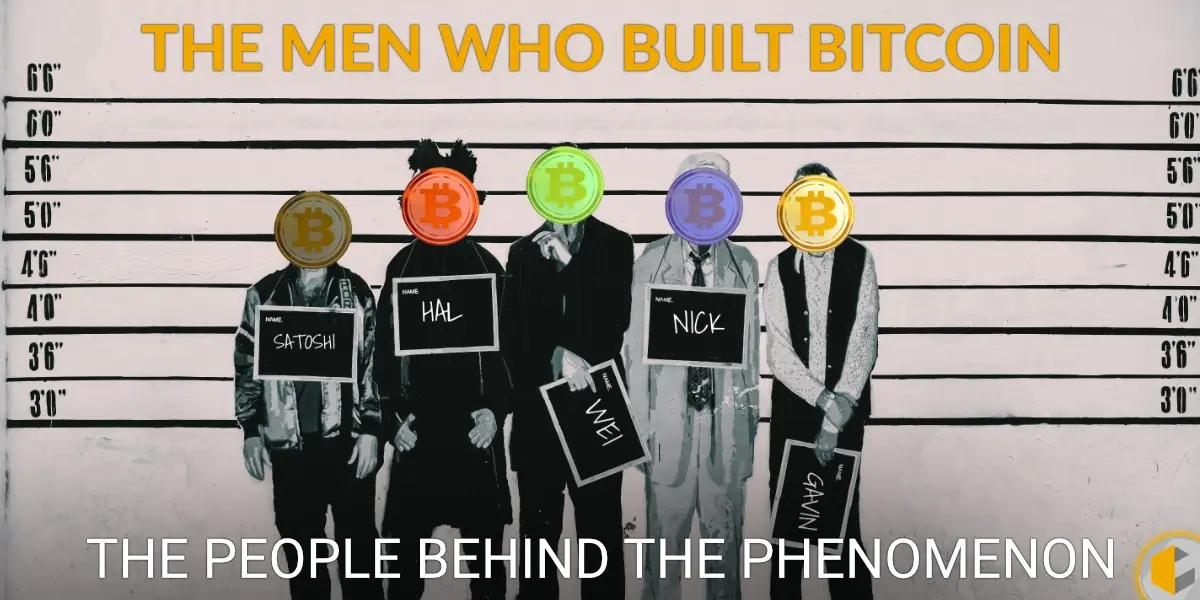
After decades of financial booms and bursts, a digital movement of new-age cryptographers has built a practical alternative to the monetary system. For more than a decade now, something vital has been happening. A marriage between technology and finance has sired a child: Bitcoin.
Since 2009, Bitcoin has changed how people think about money, monetary economics, and fiscal policy. It has exposed vulnerabilities in the long-standing monetary system. It has sometimes won praise and other times garnered criticism for its supposed unsustainability.
Bitcoin is still too early in this game to fundamentally change how money works in society today. However, it gives a compelling vision of how this change can be implemented and sustained.
The monetary system of today has no clear plan to innovate. Instead, Bitcoin has one: decentralise, digitise, and open-source. Bitcoin is inevitable, and it’s mostly thanks to the work of academics, evangelists, and believers at large.
This is the story of the men who built Bitcoin in the face of its depiction as an impossible alternative. These individuals are increasingly influential in the world of Bitcoin. Their endeavor into Bitcoin had significant implications that would impact the world for generations to come.
Satoshi Nakamoto
On 31 October 2008, a whitepaper titled ‘Bitcoin: A Peer-to-Peer Electronic Cash System’ was attached to a cryptography mailing list. Bitcoin, it proclaimed, will revolutionise the world. In its accomplishments, it surpassed all previous attempts to create a digital currency.
The founder of the Bitcoin network is an enigmatic figure. On paper, Satoshi Nakamoto is the author of Bitcoin. But he is even more famous for his pseudonym, Satoshi Nakamoto, generally trouble-free for someone who dared to go against the ‘system.’
In the name of peer-to-peer, Satoshi created Bitcoin to knock down national boundaries. Just as important, decentralisation swept away all the fundamental descriptions of a currency. Thanks to his work, people no longer believe that the status of the country determines the value of a currency.
Lately, there have been talks of Bitcoin, not the Chinese Yuan, Euro, or British Pound, as a serious competitor to the US dollar. Whether this thought can materialise is yet to be seen. As long-held ideologies disappear, people would inevitably see the system for what it is and turn to Bitcoin.
The visionary who made this possible was indeed Satoshi Nakamoto. Perhaps even more selfless, he let the world own Bitcoin, the money transfer system and valuation, and the infrastructure to build on it. Whoever he/she is, or for the matter - they are, deserves more credit than the world can offer.
Hal Finney
When Alexander Bell made the first telephone call, he communicated with his assistant, Thomas Watson. Consider what it must have felt like to speak to someone, at a distance, using electrical signals in 1876. Now imagine receiving the first Bitcoin transaction in 2009. Hal Finney, the first Bitcoin transaction recipient, is more a figure of the future than the past in Bitcoin.
Unlike the Bitcoin users of today, Hal Finney was a true revolutionary. The hard-core Bitcoin crowd believes he might have known who Satoshi Nakamoto was, and for good reasons. For starters, he lived down the street from a Japanese-American computer engineer and trained physicist, Dorian Satoshi Nakamoto.
Unfortunately, Hal Finney’s story ended on a sad note. He died in 2014, aged 58, after five years battling ALS. No one of the early Bitcoin adopters had a deeper impact on it than Finney. His genuine interest in running Bitcoin software was pivotal to its success.
In short, you can put Hal Finney in the first Bitcoin transaction, but you can’t keep him there. Finney was a star in a tiny constellation of adopters for all his interactions with the Bitcoin network but achieved legendary status a decade later. His star shines ever brighter from the first block, down hundreds of thousands of blocks later.
Wei Dai
Before Bitcoin, there had been several attempts and interests to create a digital money system. For instance, B-money was an anonymous, distributed electronic cash system proposed by Wei Dai. Dai is a computer scientist, well-known in circles for his interest in digital money.
Wei Dai has the smarts to pull off something as incredible as Bitcoin. However, Dai’s story doesn’t have a smoking gun that might expose him as the creator of Bitcoin. Nonetheless, Dai received an email from Satoshi before releasing the Bitcoin whitepaper.
In the email, Satoshi acknowledges Dai’s work and expressed the intention to expand on his original work to build Bitcoin. Perhaps, this revelation has built as much as dismissed the case that Satoshi Nakamoto is Dai’s pseudonym.
Nick Szabo
Besides Hal Finney, there are a couple of things that have intrigued Satoshi’s sleuths. Satoshi Nakamoto emailed Hal Finney, referring to a Bitcoin address he referred to as his own, which has the first two letters’ NS’. Japanese tradition states the family name first, so Nakamoto Satoshi (NS) is unlikely.
Nick Szabo, as in NS, another early cypherpunk and creator of Bit Gold (the forerunner to Bitcoin), was floated as the likely Satoshi Nakamoto. Interestingly, Wei Dai and Hal Finney all made their correspondence with Satoshi public, yet there are no known exchanges between Nick and Satoshi.
Then there’s the linguistic mishap on the Tim Ferris Show, almost calling himself the Bitcoin creator. Whatever the real story might be, Nick Szabo achieved legendary status in the Bitcoin space. He is a regular contributor in blockchain, cryptocurrency, and smart contract development.
Gavin Andresen
If Bitcoin has its own space, then Gavin Andersen is possibly its elder statesman. Gavin Andresen found himself cast in the spotlight overnight. He found fame, having worked alongside Satoshi Nakamoto on creating Bitcoin in December 2010.
Gavin Andresen dedicated his fame to advancing the public perception of Bitcoin. His effort proved effective, driving many skilled developers to work on the open-source software protocol. Additionally, after Satoshi left the project, he/she somehow passed his/her work over to Andresen, making him the face of Bitcoin.
Charlie Shrem
Bitcoin is Charlie Shrem’s entire world. Shrem was an early Bitcoin investor from his college days to launch the Bitcoin Foundation. He started BitInstant, where people could buy and sell with Bitcoin in 700,000 locations. BitInstant grew to process close to 30% of all Bitcoin transactions.
Shrem’s Bitcoin foundation’s mission was to promote and standardise Bitcoin for the average Joe and Jane. His success made him a household name for people who were just getting started with Bitcoin. Shrem has an interesting backstory, which Bitcoin credits for its success.
Bottom line
The broader point is that the success of Bitcoin relies to a surprising degree on the contributions of these men. The role of each in plotting, facilitating, coding, and promoting Bitcoin drove it to dominance. A few became well-known, but their work is by no means less than exceptional.
Will we ever find out who Satoshi Nakamoto is? Maybe. Some speculate ‘Satoshi Nakamoto’ might not even be someone’s name, but a sly portmanteau of tech firms: SAmsung, TOSHIba, NAKAmichi, and MOTOrola.
Editor-in Chief
Related Posts






Subscribe to our newsletter!
Information


